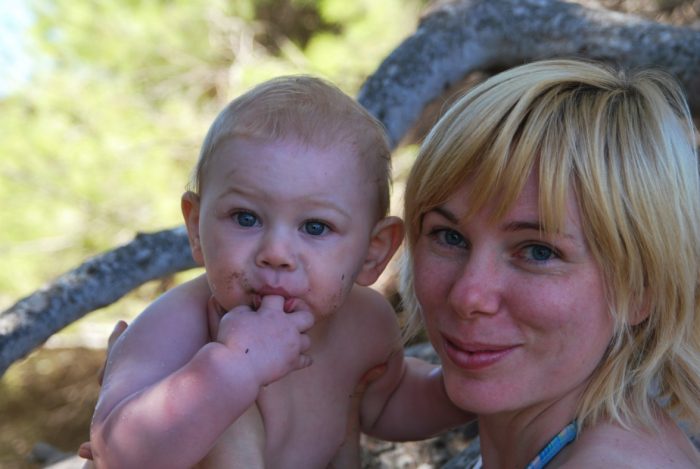I was a first-grade teacher when I started yoga teacher training.
As part of my training, I was required to teach yoga in a group setting several times before the training would be considered complete. I was new in town and knew few people. One day, as I was studying the health benefits of yoga and its calming properties, I decided to try it out on my snowed-in group of first-grade behavior challenged students.
Here’s what I’ve learned will help you get the same calming benefits at home:
1. Just Breathe
Breathwork and yoga bring each individual, no matter his or her age, into the present moment. It raises our awareness of our physical bodies and physical presence in time and space. Being in the present moment eliminates a lot of unnecessary distractions.
Something as simple as focusing on the breath can turn the volume down on the world around us until those distractions fade into the distance. By teaching our children how to recognize the present moment, we can teach them cues to always be able to go back to this time and feeling throughout the day.
Remember when you were a child, red-faced and fists clenched? I do! I would get so mad; I would literally hold my breath until I fainted! At some point, some wise old soul taught me to take a deep breath and count to 10.
Kids these days aren’t doing that because we’ve simply forgotten to show them.
Are you breathing? Take a deep breath, center yourself, and teach your child to do the same during a calm moment during the day. Try a calming routine to do this activity together, just as they wake up for the day, so they can remember and go back to this moment later.
2. Make Calming Breathing a Game
Ujjayi breath is breathing from the diaphragm. A deep inhalation fills the diaphragm, then comes up to the lower abdomen, rises into the rib cage, moves up the chest, and finally enters the throat. Some yoga classes will refer to Ujjayi as the “ocean breath” because of the similarity between the sounds of the breath and ocean waves.
For children, I like to also refer to it as “dragon breathing.” Dragon breathing creates fire and warms up the body. Ujjayi breath increases oxygen, builds internal body heat, and regulates blood pressure. Every child I’ve ever worked with loves to learn how to breathe like a dragon.
When you create a visualization, it is essential to remember you are trying to create a feeling. With counting and breathing, the heart rate will slow, blood pressure will begin to go down, and calm will begin to set in.
3. Choose your Words
Your words create the feeling you are trying to achieve. Choose words that take action. For example, if you are trying to calm a child, choose the words you associate with relaxation such as: sink, drift, or recline.
Here is a shortlist of some of my favorite visualization verbs to help you get started:
>> notice
>> feel
>> relax
>> imagine
>> see
>> taste
>> smell
>> listen
4. Take What Works and Leave the Rest
You counted down from 10, and your child is still screaming? That’s okay! Some things will work, and some things won’t. Every child is different, and every situation is different, but trust me, when you find the magic phrase or the magic breath for your student, you’ll go to it repeatedly.
Many of my students responded well to music. Music became a reward. Some respond to stickers. 2020 is an unprecedented time for all of us. Continue to practice gratitude and positive reinforcement and watch how your student lights up. When they feel good, they act better. Take what works and leave the rest.
5. Get Outside Help
In a classroom, even the best teacher has an aide. Many families desperately need a teacher to help either in person or through virtual meet-ups. You are not alone. This is uncharted territory for all of us, but help is available.
When I started incorporating these tricks into my classroom teaching, I realized that I was on to something big, and I began researching why exactly this was working. What I learned amazed even me.
I knew breathwork had been found to have numerous health benefits, including mental health. But I was surprised to learn that programs that had adopted a regular relaxation practice into their curriculum saw increased test scores, decreased behavior problems, and increased classroom participation.
Breathwork empowers people by creating focus. It allows you a space to become aware of how your body feels.
By the way, this works great for both children and adults. Take a deep breath, mom; you’re doing great.







Read 2 comments and reply